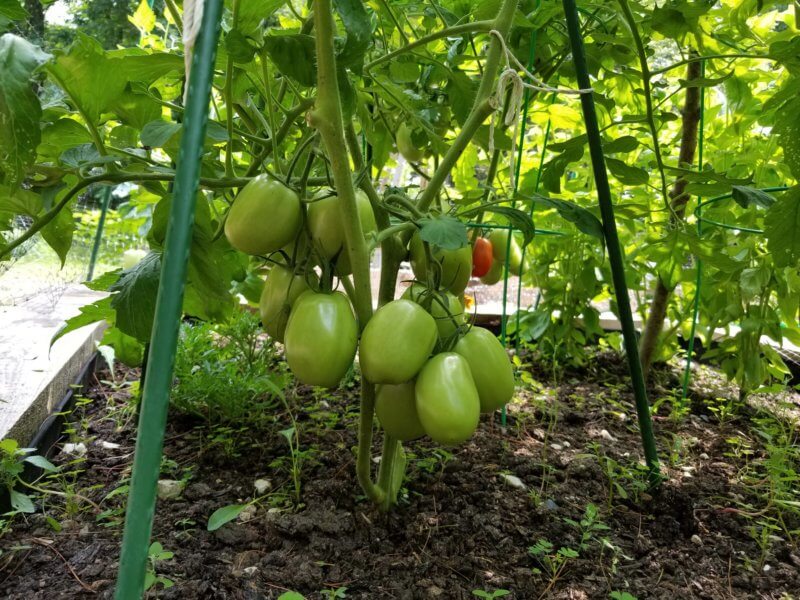How to prune tomato plants
If your tomato plants look overgrown and crowded, now may be a good time to consider pruning them. Although pruning tomato plants is not required, it is a good practice to adopt during the growing season.

Properly pruning tomato plants improves the quality of your fruit. It creates airflow to keep diseases at bay and speeds ripening in cold climates. Pruning also prevents crowding and improves sun exposure, which makes it easier to spot hornworms and other pests.
Plan this task for a dry day. Be sure to disinfect your pruning shears with a 10-percent solution of chlorine (one part chlorine to nine parts water) before you begin.
How you prune a tomato plant depends on its type: determinate or indeterminate.
Determinate types are recognizable by flowering at the terminal end of a branch. This signals stems to stop growing. Determinates grow to a fixed height of about four to five feet. Blossoms develop at the same time, culminating in a short harvest period of about three to five weeks.
Indeterminate types have a vining growth habit. Their terminal buds grow new leaves and branches that progressively produce blossoms and fruit as the vine grows. Indeterminate tomatoes have fruit in various stages throughout the growing season.
If you cannot identify the type by observation, check the seed packet or plant tag from where you obtained your tomato plants. Tomato types should be clearly labeled as determinate or indeterminate on the packaging.
Only minimal pruning should be done on determinate tomatoes because this type sets a fixed amount of fruit. At this time in the growing season, pruning determinate tomatoes should be limited to removing the lower leaves to increase air circulation and pruning the leaves that touch the soil to avoid contamination from soil-borne disease. During heavy rains, this minimizes dirt splashing on the leaves and prevents early blight.
Indeterminate tomatoes benefit from the removal of their lower leaves as well as the following pruning guidelines.
Remove auxiliary buds or suckers (the shoots growing in the angle between the main stem and a leaf stem) to promote earlier and bigger fruit and to help create airflow potentially preventing disease.
Suckers on indeterminates are best pinched off when they are small. Use your fingers to snip them off. You also can use clean pruning shears to remove larger suckers.
About a month before your first expected frost, remove the growing tips of the main stems of indeterminates. This will signal the plant to stop making flowers and setting new fruit. Instead, it will use its energy to grow larger established fruit and speed the ripening process.
You also can prune the crowded leaves at the center of an indeterminate tomato plant, again to increase airflow. Just be mindful not to remove the leaves above and below a cluster of fruit as these leaves provide shade and supply the fruit with sugar.
Pruning can be intimidating to novice gardeners, but don’t be afraid to try. You will be rewarded with healthier plants and juicier fruit.
Nadie VanZandt is a UVM Extension master gardener from Panton.

